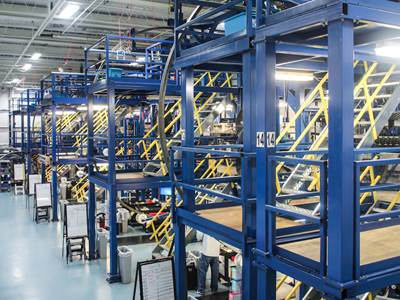Awaiting the next Black Swan
HPC editor-in-chief Jeff Sloan posts a rare recommendation for a recent book about rare events that rarely meet our expectations.
It’s rare that I evangelize about a book, but once in a while, I come across a tome that either appeals highly to my sense of reason or makes me think differently about how some aspect of my life or how our world functions. I recently read a book that does both, and I think it has application for the composites community.
The book and author might be familiar to you: The Black Swan, by Nassim Nicholas Taleb, was published in 2007. Both have been much discussed since publication, and Taleb is a regular guest on many of the 24/7 news and economy shows that populate cable TV — particularly since the financial/banking sector meltdown in fall 2008.
Taleb is part statistician, part economic analyst, part historian, part investment banker and part philosopher — at least he is for the purposes of the book he authored. In the book, Taleb explores in great detail the theory he has developed, called the Black Swan, which says, in a nutshell, that much of human history has been positively and negatively affected by the advent of relatively rare and unforeseen events: All swans are white (or so we believe) and, therefore, (again, so we believe) a black swan is impossible. When one comes along (and, very rarely, they do), we are unprepared. Taleb’s contention, of course, is that a Black Swan is only improbable. The large impact of improbable events, he calls it. One of the tenets of Taleb’s argument is the notion that complex human systems (e.g., economies, the financial sector, deepwater oil wells, air traffic control systems) are inherently fragile and susceptible to easy disruption. Further, humans in general have proven not to be very good at assessing risks in these systems and, thus, underestimate their vulnerability to a negative Black Swan — such as the recent Wall Street-initiated world recession.
At the same time, human systems, thanks to the same complexity that makes them fragile, are also capable of spontaneous and paradigm-shifting innovation and creativity (e.g., the telephone, penicillin, television, the computer chip, the Internet, etc.). And when innovation occurs, it’s often difficult for us to appreciate quickly its true potential. When the Internet first came along, how many of us could have imagined that it was a positive Black Swan that would one day allow us to wirelessly send and receive text, photos and video via handheld devices?
If we extend the Black Swan concept to the composites community, a thought experiment emerges: Can we anticipate the risks of disaster and the bursts of innovation? Some Black Swans we have seen before and can imagine happening again, like a shortage of carbon fiber. And we can look back on some innovation and see that we are living through some Black Swans already, like the pervasive use of carbon fiber composites in the 787 Dreamliner and the A350 XWB. It’s not possible, however, to foresee true Black Swans, because, by definition, they are simply beyond our powers of imagination.
But we can, at least, allow for the possibility of Black Swans: Does increased use of carbon fiber in wind blades represent a game-changing Black Swan, or is it just another market segment for carbon fiber? Do efforts like BMW’s Megacity Vehicle represent the dawn of carbon fiber’s use in mass-prodcution automotive structural members, or just a modest experiment in carbon fiber use? These are large and largely unanswerable questions as of yet, but it’s intriguing to contemplate the change that’s already shaped this community and wonder what Black Swans await us.
Related Content
Collins Aerospace to lead COCOLIH2T project
Project for thermoplastic composite liquid hydrogen tanks aims for two demonstrators and TRL 4 by 2025.
Read MoreNovel composite technology replaces welded joints in tubular structures
The Tree Composites TC-joint replaces traditional welding in jacket foundations for offshore wind turbine generator applications, advancing the world’s quest for fast, sustainable energy deployment.
Read MoreRecycling end-of-life composite parts: New methods, markets
From infrastructure solutions to consumer products, Polish recycler Anmet and Netherlands-based researchers are developing new methods for repurposing wind turbine blades and other composite parts.
Read MoreUpdate: THOR project for industrialized, recyclable thermoplastic composite tanks for hydrogen storage
A look into the tape/liner materials, LATW/recycling processes, design software and new equipment toward commercialization of Type 4.5 tanks.
Read MoreRead Next
CFRP planing head: 50% less mass, 1.5 times faster rotation
Novel, modular design minimizes weight for high-precision cutting tools with faster production speeds.
Read More“Structured air” TPS safeguards composite structures
Powered by an 85% air/15% pure polyimide aerogel, Blueshift’s novel material system protects structures during transient thermal events from -200°C to beyond 2400°C for rockets, battery boxes and more.
Read MorePlant tour: A&P, Cincinnati, OH
A&P has made a name for itself as a braider, but the depth and breadth of its technical aptitude comes into sharp focus with a peek behind usually closed doors.
Read More










.jpg;maxWidth=300;quality=90)











